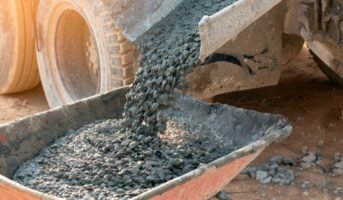Steel is one of the most important materials in housing construction. Steel forms the backbone of structural integrity, whether it is a dam, a bridge or a house. If you are planning on building a house or making renovations to an existing one, good quality steel is one of the items you need.
This makes it prudent that you should know how to calculate the weight of steel required to complete your construction. Luckily, the method of calculating the weight of steel is very simple to understand.
Importance of steel
Before we proceed to understand steel weights, aren’t you curious to know why steel is so important? What makes this metal one of the most significant components of construction? Why use this additional component instead of simply constructing using only concrete?
The answer to these questions is quite simple – tensile strength. Let’s understand what this is and why this is a game-changer for construction work.
Concrete is a very hard material. But it is only hard under compression. This means the concrete will always refuse to crumble under a large weight load. However, it refuses to retain its hardness under tension.
This simply means that if a concrete structure were to bend or flex, it would immediately crack and crumble. This is why steel is inserted into concrete structures. Steel is a metal with high tensile strength and allows concrete to bend without crumbling.
The main difference between steel’s tensile strength and concrete’s compressive strength is the foundation on which all buildings are constructed. Quite literally, in fact!
Now let’s move on to calculating the weight of this metal and some tips when you buy steel from the market.
know about: unit weight of steel
Steel weight formula: What is the formula for weight calculation of steel bars?
The steel used in construction is sold in the form of steel bars. These bars are often very long, and it is impractical to be weighed on a scale. However, there is a very simple way to calculate the weight of steel. This method is called the steel weight formula.
This formula takes only two things into account. The diameter of the steel being used and a mathematical constant. The formula is D²/162, where ‘D’ is the diameter of the steel bar.
What is the unit weight of steel?
This formula works based on the ‘unit weight’ of materials. The unit weight of any material is the weight of 1m³ of that material in kilograms.
For example, 1m³ of steel will weigh around 7850 kg/m³. This is a known property of steel. However, the interesting thing is that this amount may increase or decrease if there are any additives added to this steel.
An example of this is high-carbon steel. This type of steel will weigh more than regular steel since it has an added substance in it.
How do you calculate the weight of steel?
As mentioned above, you only need two things to determine any steel bar’s weight. Of these two, one of them is the constant ‘162’. So, technically, all you need to know to measure the weight of any steel bar around you is its diameter.
Let’s say you want to find the weight of a 30 ft long 8mm steel rod. Since you know the diameter of the steel rod, the calculation becomes a piece of cake.
Types of steel rods used in construction
Using the steel weight formula is even easier than you think. There are certain set types of steel rods that are used in construction work. Steel rods come in diameters of 8mm, 10mm, 12mm, 16mm, 20mm, 25mm, 32mm, and 40mm.
Now, for housing purposes, only diameters from 8mm through 20mm are used. The other large-diameter steel rods are used in projects like bridges and dams.
Since you know the diameter of steel being used in construction, isn’t it just far more convenient to calculate their weight now?
Here is something that will make things easier. The table below shows the unit weight of steel rods per foot for each diameter that is used in housing construction.
| Diameter of steel rod | Unit weight of steel rod |
| 8 mm | 0.12 kg/ft |
| 10 mm | 0.185 kg/ft |
| 12 mm | 0.271 kg/ft |
| 16 mm | 0.481 kg/ft |
| 20 mm | 0.75 kg/ft |
With the table provided above, all you need to do now to find the weight of the steel rod is to multiply the value provided by the total feet of steel that you want.
How to calculate steel bar weight at the construction site?
To calculate the weight of steel bars at the construction site, follow these steps:
- Identify the bar’s diameter.
- Count the number of bars of each diameter.
- Calculate the unit weight for the steel bar of each diameter.
- Multiply the weight with the length of bar to get the weight of each bar with a specific diameter. Then, multiply the result with the number of bars of that diameter. This will be the total weight of all the bars of that diameter.
- Do this for all the different lengths of steel bars and add the results together for total weight.
Why is it important to know weight of steel rods?
The simplest answer to this question is – budgeting. If your builder tells you that the construction will require 30 rods of 8mm steel, 120 rods of 12 mm steel, and 200 rods of 16mm steel, each measuring 40 ft, with the table and the formula provided above, you can now easily find out how many kilograms of steel you will have to buy.
Being able to calculate the weight of the steel rods that you need to buy will also make the ordeal of buying steel much easier since it is always sold in kilograms.
Tips to buy good quality steel
The next time you hit the markets to buy quality steel, keep these tips in mind.
- Always ensure that your steel carries the BIS (Bureau of Indian Standards) certification on your steel bars. This is always a guarantee of good quality steel.
- When buying steel for home construction, always opt for TMT steel. TMT stands for Thermo-Mechanically Treated steel and is known to be amongst the strongest steel available in the market.
- Make a surface check on the steel to ensure it has no deformities or rust.
- Carry a ruler or, ideally, a set of vernier callipers when buying steel to ensure that the bar’s diameter is as specified on the product. Most sellers will have one of these lying around the store.
- Try finding out the source of the steel. If the steel was made from steel scraps, it is possible to have high carbon content. This makes the steel more corrosive.
Types of steel
Depending on its chemical composition, steel has many different varieties. These include:
- High alloy steel
- Low alloy steel
- High carbon steel
- Medium carbon steel
- Mild steel
Steel: Advantages
Steel has a number of major advantages. Some of these include:
- High tensile strength: Steel’s high tensile strength makes it perfect for strengthening concrete structures as it does not break under high tension.
- Difficulty to shape and mould: Steel is not easy to mould or shape like fresh concrete. While it can be moulded under extremely high temperatures, it is more complicated to bend.
- High compressive strength: Like concrete, steel is resistant to compression forces. When combined with concrete, it serves as the perfect material for constructing durable structures like bridges and buildings.
- Recyclable: Steel is a 100% recyclable material and does not allow any wastage.
FAQs
Why is steel used in construction?
Steel is used along with concrete in construction to increase the tensile strength of the building. This is a very important factor that determines the structural integrity of your building.
What are the signs of bad quality steel?
Some common signs of bad quality steel are chipping/cracking on the surface and corrosion. The steel you buy should be completely free of any rust.
What are signs of good quality steel?
Good quality steel used in construction should be high carbon steel. This steel Is identified by its typical greyish brown colour and BIS Standard marks like Fe415/500/550/600. The higher the number, the stronger the steel.
What type of steel provides the best resistance against earthquakes?
An earthquake is the ideal test of the tensile strength of steel. The very purpose of using steel in construction is to protect against high-stress eventualities like earthquakes. High-quality steel in the Fe415 range and above will provide reasonable protection against earthquakes. However, the severity of the earthquake determines the final outcome.
Housing News Desk is the news desk of leading online real estate portal, Housing.com. Housing News Desk focuses on a variety of topics such as real estate laws, taxes, current news, property trends, home loans, rentals, décor, green homes, home improvement, etc. The main objective of the news desk, is to cover the real estate sector from the perspective of providing information that is useful to the end-user.
Facebook: https://www.facebook.com/housing.com/
Twitter: https://twitter.com/Housing
Email: [email protected]











